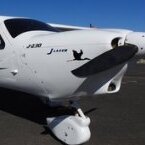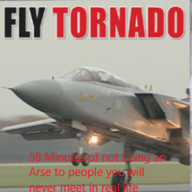-
Posts
3,464 -
Joined
-
Last visited
-
Days Won
47
RFguy's Achievements

Well-known member (3/3)
-
RFguy started following Odd Radio problem , 6 cylinder surprise and Grinding noise from radio (Microair M760) at low revs
-
yeah, this is a change of tune from Jabiru, and very welcome. I guess this is the new owners touch. and long overdue. In the past Jabiru would have not informed anyone unless you called up and asked you might get the real story, but never in writing....
-
soundslike PTT is wired across the mic, and not the separate PTT input... (or both) ***somewhere in the wiring perhaps there is a short between mic and PTT. measure it on the back of the sockets with an ohmmeter....
- 1 reply
-
- 1
-

-
Usually there is a broad overview and background "briefing" for what will be covered before a flight... But instructors can do what they please if they think it is useful .. all a judgement call, varies person to person... Though, Nev, I agree, steep turn onto final is something more advanced and for the experienced. Doesnt hurt for the the instructor to demonstrate what is possible, as long as caveats are spelt out....
-
I agree, I would have let you do your own thing and observed how you did . Maybe on a 2nd go at it, the instructor could demonstrate turning airspeed into altitude. There's no better way to learn than doing it by yourself My instructor Rob would probably have let me have a fist of it and observed what I did and then on the ground or at another time, discussed/workshop-ed it, but, every instructor has their own methods, nothing particularly wrong either way....... ....I dont mind the steep turn at 500' onto final if I have heaps of airspeed, height and that I know I can bleed off that airspeed with a heap of drag out when the time comes. That's all experience.... Be mindful that (deadstick) steep turning onto final is going to be done with a high loss of altitude..... My (clean) Piper at max weight, 45 deg bank , I would be flying at 85 kts to pull that off... (15 kts above stall for that weight and bank) ......and I probably am going to loose 500' doing it....(15-20 seconds) I usually fly that manouver by looking at where I want to land with one eye (out the side window.....) , and another eye on airspeed and bank angle....- pitching the aircraft down sufficiently to keep the airspeed high. IE in those cases I am flying airspeed, and everything else on the panel is a distant secondary - except maybe bank angle........ No real need to look at the altimeter in those cases, you probably have no idea of the ground height and experience will permit you to judge 'enough height',,,,
-
that's the thing- speed envelope... if you have plenty of power and runway, tune for top end.... no need for a CSU.... . how many ml/nm at 140k TAS ? (lph / TAS) as for the busted crank, could be anything. but one needs ot be careful of the situation of having a heavy weight at both ends of the crank. 520 manual says "Propellers with a Rotational Moment of Inertia of up to 0,8kgm² have been used with no known problems" whatever that means... The airmaster https://www.propellor.com/ap533hctf-snr67je says it's 0.5kg.m2 But ya dont know about the possible harmonic behaviour without some instrumentation attached.... I'd go with a 3 blade. and put some vibration instrumentation in xyz on the crankcase.
-
yeah, they may buy in very large quantity, so they might have a price advantage. Otherwise, there is no price advantage buying wire from the US compared to local EDMO. colors are usually small 50' rolls. everything else is by the foot. What you need behind the instrument panel will depend on what instrument connectors you have, like high density versus standard density D connectors (3 versus 2 row etc) . excess copper is weight. Be sure to be fully across AC43.13 for requirements of wire size (single and in bundles ) for circuit breaker sizes...
-
Suggest buy from EDMO. If you dont buy from australian supliers, there wont be any. Sure you can buy from Spruce if you like, but you'll pay more per foot.... Shame on anyone who doesnt buy from AUstralian suppliers when there is no good reason except lazyness.
-
I think I'd like to have at least 500 feet to lose to restart the Lycoming in my PA28.... and probably wouldnt attempt it below maybe 1000 feet if there was a place to land in sight.... better to concentrate on the landing, unless you have someone competent in the other seat to fly it while you are dealing with the primer etc, troubleshooting.....
-
I read there is a crossover point with faster aircraft , and that prop stopped is more drag than prop idle for airplanes with 70-90 kts (for example) best glide. Your best glide would be , what , 50 kts clean ?
-
JG3, any idea how different is your sink rate with prop stopped versus idle ? . I do a glide whenever there is no one else in circuit. Not too polite a manoeuver, otherwise.
-
Skip you are going to have to put some numbers on the requirement. Force - I cannot beleive much unless it is acting as a bucket scoop ,But it WILL have some of the pressure of the cowl insides... You would be able to make a reasonable estimate of the upper limit of the pressure on the cowl flap. Travel ? . Many Model RC-servos will do the job you want , since I gather you are fine if it doesnt work.
-
at least from where they are, that should be an easy for any pilot. But ya do need to do them regularly to be regularly successful. I find that doing them with some wind around is useful - IE adding the requirement to think about the wind . When I practice and end up short, its usually because I forgot to take into account the 10 kts at 500', which can make a difference.... Some are hesitant when a bit high on final, to point the nose at the ground and / or use a slip near the ground in order to increase the rate of descent- still thinking about a 500fpm descent rate....





